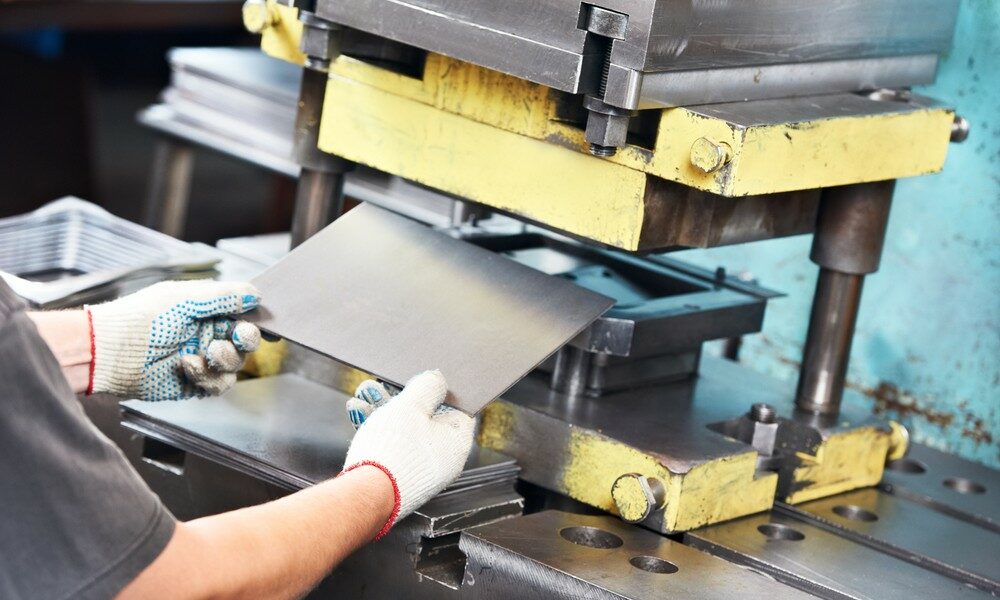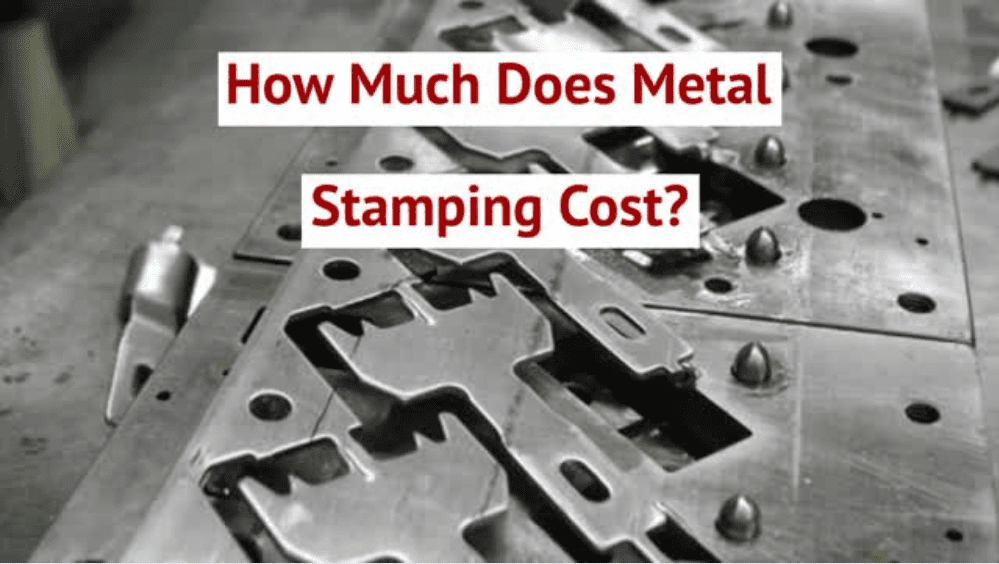Advanced Techniques in Metal Stamping for Precision Manufacturing
In the world of precision manufacturing, the advancement of metal stamping strategies has actually been a critical pressure in accomplishing exceptional levels of precision and efficiency. As sectors continuously demand better tolerances and intricate layouts in their steel components, the quest for sophisticated strategies in metal stamping has magnified. From the utilization of innovative multi-stage stamping procedures to the integration of innovative automation technologies, the landscape of steel marking is going through an extensive change. In this vibrant sector, the convergence of technology and precision is reshaping the opportunities of what can be achieved in metal manufacture.
Advanced Multi-Stage Stamping Procedures
Reviewing the intricacies of sophisticated multi-stage marking procedures discloses the sophisticated methods used in modern-day manufacturing methods. Metal Stamping. Multi-stage stamping is a complicated procedure that includes several actions to change a level sheet of metal into a final stamped product. Making use of modern passes away, where different operations are done at each stage of the stamping process, allows for high precision and efficiency in the manufacturing of intricate steel components
Throughout the first phases of multi-stage marking, the flat metal sheet is fed into the marking press, where a collection of dies are made use of to cut and form the product. Subsequent stages involve additional forming, flexing, and punching procedures to additional fine-tune the part. Each phase is carefully designed to construct upon the previous one, leading to the production of intricate geometries with tight tolerances.
Advanced multi-stage marking procedures need a high level of know-how and accuracy to guarantee the quality and uniformity of the stamped parts. By utilizing innovative equipment and tooling, producers can produce a vast array of metal parts with effectiveness and accuracy.
Accuracy Tooling Innovations
Precision tooling innovations have actually transformed the metal marking industry, boosting effectiveness and top quality in producing processes. These innovations have dramatically affected the way steel components are created, leading to greater precision and uniformity in the last products. One vital advancement is the growth of computer mathematical control (CNC) innovation in tooling layout and fabrication. CNC systems permit for intricate styles to be translated directly right into tooling, ensuring precision and repeatability in the marking process.
Furthermore, the integration of sensing units and real-time tracking abilities in accuracy tooling has actually allowed makers to identify and resolve issues promptly, minimizing downtime and decreasing scrap rates. By incorporating smart technology into tooling, drivers can maximize criteria such as stress, rate, and positioning during the stamping operation, resulting in improved item top quality and boosted efficiency.

Automation in Steel Stamping
The development of precision tooling developments in the metal marking sector has actually led the More Info way for significant advancements in automation, changing the production landscape towards increased efficiency and performance. Metal Stamping. Automation in steel stamping entails using advanced machinery and robotics to execute numerous tasks traditionally accomplished by human drivers. This shift in the direction of automation uses various benefits, consisting of enhanced precision, quicker production cycles, and lowered labor expenses
One key facet of automation in metal marking is the execution of computer mathematical control (CNC) systems, which allow precise control over the marking process. CNC modern technology permits the creation of complicated and elaborate steel get rid of regular quality. In addition, automated systems can be configured to run continually, resulting in greater outcome prices and shorter preparations.
Moreover, automation improves workplace security by lowering hands-on handling of hefty materials and reducing the threat of accidents (Metal Stamping). As producing sectors remain to accept automation, the future of steel stamping holds wonderful promise for also higher performance and development
High-Speed Stamping Methods

Among the key benefits of high-speed marking strategies is the capacity to generate a huge quantity of components in a much shorter quantity of time contrasted to standard stamping techniques. This boosted efficiency not only enables producers to satisfy tight production deadlines yet additionally makes it possible for price financial savings with economic climates of scale. Additionally, high-speed stamping can help in reducing product waste by maximizing the material usage during the marking procedure.
Moreover, high-speed stamping techniques often incorporate cutting-edge functions such as quick die change systems and real-time surveillance capacities, additionally improving the overall performance and versatility of the metal marking procedure. As technology continues to breakthrough, high-speed stamping is expected to play a crucial duty in driving the future of precision production.
High Quality Control in Stamping Operations
Reliable quality assurance steps are important for making sure the reliability and uniformity of metal marking operations. Quality control in marking operations entails a series of organized processes focused on finding and avoiding defects in the produced components. One vital aspect of top quality control in metal marking is the use of innovative evaluation strategies such as optical evaluation systems and coordinate gauging machines (CMMs) to confirm the dimensions and tolerances of stamped components.
Additionally, quality assurance actions in stamping procedures often include the execution of statistical process control (SPC) approaches to monitor the production procedure in real-time and ensure that it my latest blog post stays within appropriate restrictions. By evaluating information and recognizing trends, makers can proactively resolve any variances from the wanted top quality standards.
Additionally, quality assurance in steel marking operations also includes complete material testing to guarantee that the raw materials utilized satisfy the called for specs for the marking procedure. This might consist of performing product solidity examinations, tensile toughness examinations, and dimensional inspections to guarantee the quality and integrity of the stamped components. In general, executing robust high quality control steps is important for accomplishing top notch stamped components constantly.
Final Thought
Finally, advanced methods in metal stamping play an essential role in precision production procedures. With multi-stage stamping processes, innovative tooling remedies, automation, high-speed strategies, and extensive quality assurance steps, producers can achieve greater degrees of accuracy and efficiency in their operations. These advancements in steel marking technology have made it possible for business to generate intricate components with tight tolerances, ultimately causing boosted product top quality more tips here and client fulfillment in the manufacturing sector.
Comments on “Metal Stamping: Advanced Techniques for Achieving Precision and Efficiency”